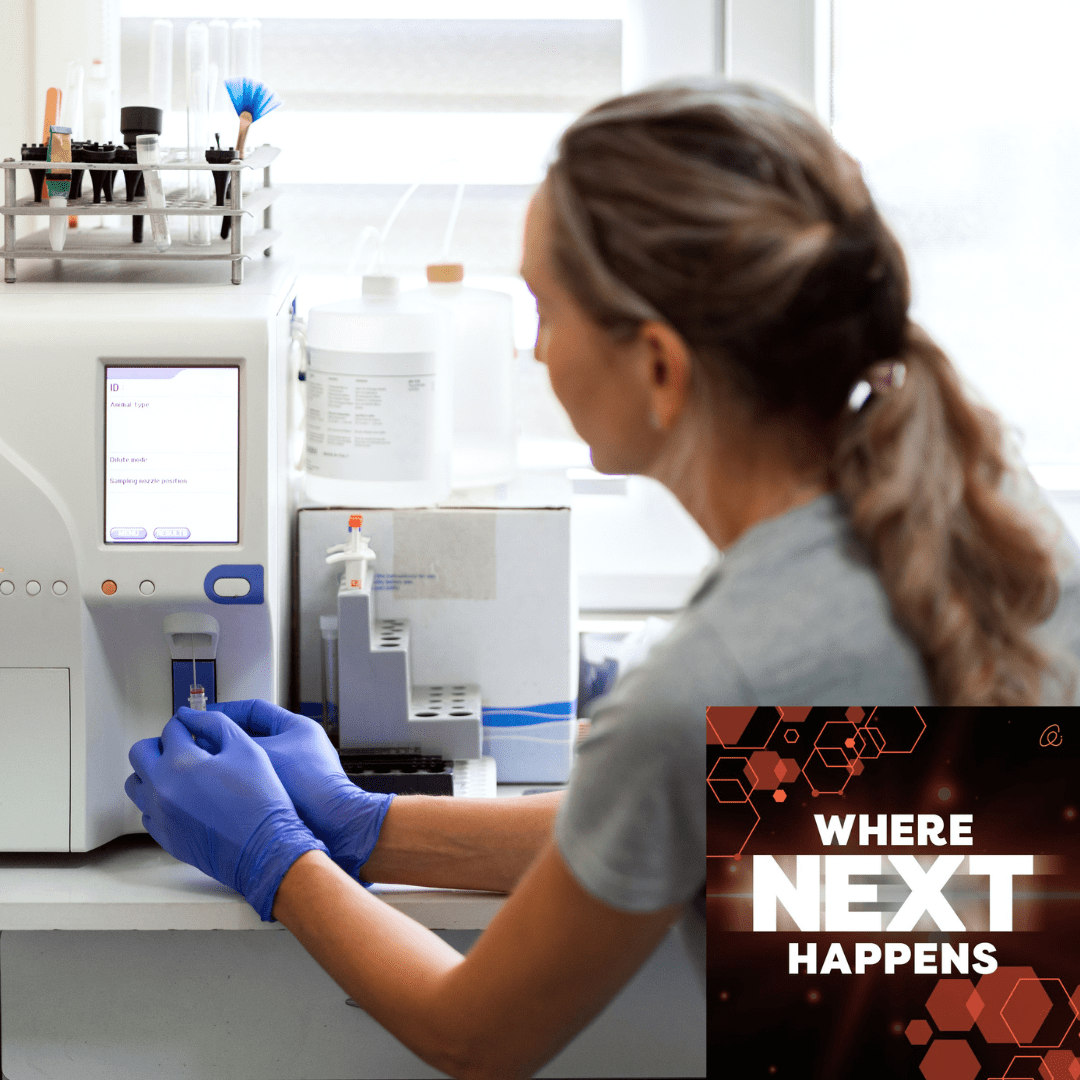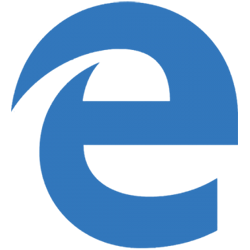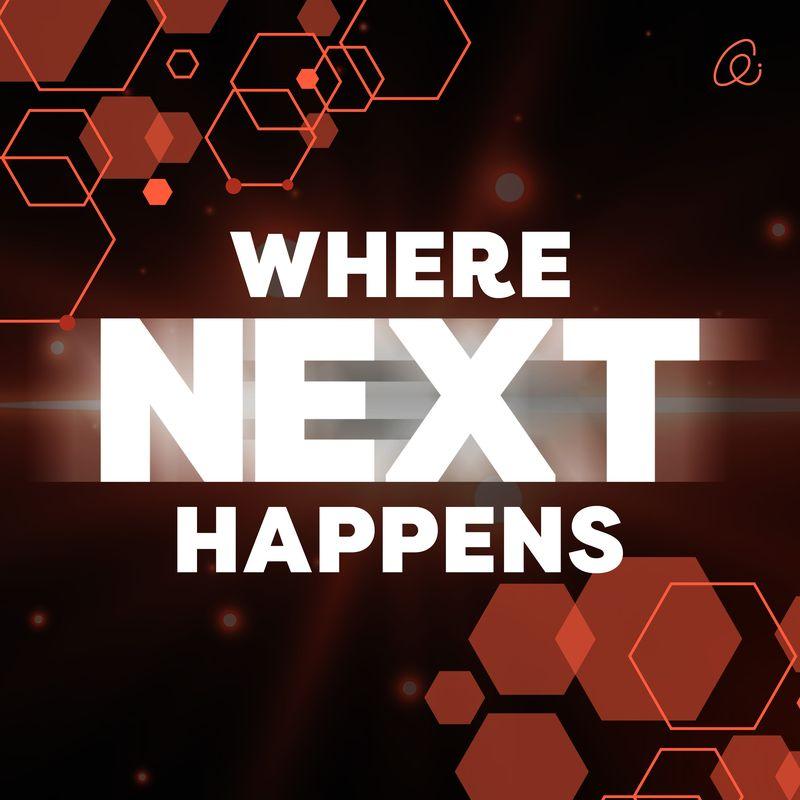
Description
Cancer affects almost every Canadian family, but advances in robotics and artificial intelligence are reshaping how we diagnose and treat this disease. In this episode of Where Next Happens, Dr. Claudia Krywiak speaks with Saumik Biswas, CEO and co-founder of Tenomix, to explore the company’s journey from early innovation to commercialization of a revolutionary robotic device that accelerates and standardizes cancer diagnostics. Biswas shares his personal inspiration, the hurdles of MedTech entrepreneurship, and the promise of AI-powered tools in transforming pathology and patient care.
spotify
Listen on Spotify, Apple Podcasts or wherever you get podcasts.
Transcript
Claudia Krywiak
Cancer touches nearly every Canadian family. In 2022 alone, more than 230,000 Canadians were diagnosed and over 85,000 lost their lives. Research shows that every four week delay in diagnosis or treatment raises the risk of death by about 6%. So after more than a year of pandemic related cancellations and delays back in 2020 and 2021, the stakes are even higher. And despite decades of research, there is still no cure. But new technologies are reshaping the fight, from robotics to artificial intelligence. Welcome to Where Next Happens. I’m Doctor Claudia Krywiak, president and CEO of the Ontario Centre of Innovation. My guest today is Saumik Biswas, CEO and co-founder of Tenomix with a PhD in pathology and laboratory medicine,Saumik is developing robotic technology that makes cancer diagnostics faster and more accurate, and helping doctors better stage cancer and guide treatment. Saumik. Welcome. It’s great to have you here. Why don’t we begin with the origin story? What inspired you to start Tenomix, and how did your background in pathology shape your vision for the company?
Saumik Biswas
Hi Claudia, thanks so much for having me. It’s a pleasure being here today. How Tenomix started I would say was back in early 2020, and I think everyone remembers how that year went with Covid. But after my my training in pathology, I really wanted to start a company. And in order to really build out my business fundamentals and skill sets, I found the Medical Innovation Fellowship program at Western, and basically it’s a roughly an 11 month program where you get to interact with other engineers, physicians, and clinical scientists. And the whole idea of the program is to interview clinician, figure out their pain points, and then develop a solution with the idea of either licensing out the IP to a larger company or starting a startup. So in 2020, around August, is when I met my teammates and I remember interviewing a pathology colleague of mine at University Hospital in London. And he remember I remember him mentioning this sort of issue with with finding lymph nodes and excise colon cancer tissues and my team and I we essentially found what he mentioned very interesting. And we essentially looked into that problem and where he checked throughout the program and built technology. Now, where my pathology inspiration came from, I would say is based on two events that happened in my life. I was around the age of seven, when I was introduced to medical innovation. My younger brother had this really rare, sporadic genetic condition in his leg, where he was missing his tibia bone called fibrous dysplasia. And in order for him to basically have a normal quality of life. My my parents have to take him to Toronto SickKids hospital. And the head orthopedic surgeon had a background genetics. And he did this innovative surgery where he put basically a metal rod in my brother’s leg that act as a scaffold with a bunch of other stem cells. And essentially over several years, a new tibia bone was able to grow. And right now, he’s taller than me, which is I’m a little bit jealous on that front. And, you know, he’s doing great. But at seven, I had to really explain to my parents what this surgical technique was, research this condition, and tried my best to explain it in a very lay level. And that’s where I started falling in love with, with sort of medical innovation, genetics. And fast forward, another nine years, around 16, I lost a close Aunt of mine to improper colon cancer staging. And she was my mom’s best friend. And I remember the impact to have my mom growing up. So that’s when I sort of dedicated myself to learning more about pathology and ultimately, why I pursued my PhD in pathology.
Claudia Krywiak
So you’ve been interested in science and specifically in pathology from a very, very young age. What about the entrepreneurial side of things? Have you always been interested in entrepreneurship and how did you think about entrepreneurship as you were studying?
Saumik Biswas
It’s a great question, Claudia. And to be honest, I didn’t really know that there was really a nice intersection between, medicine and academia and research, towards industry. So I actually learned more about entrepreneurship during my PhD. So what actually ended up happening was during my PHD, I received this, my Text Global Link Research Award that allowed me to spend 3 to 4 months in Hong Kong working with a the serial entrepreneur, who is also a scientist and professor at Hong Kong University, and working with him. I sort of saw him, you know, building innovative solutions in the lab and translating that to the market. And that’s where I’m like, oh man, this is exactly what the pure definition of medical innovation is. How do I get involved in this? And as soon as I got back into my PhD, I discovered a few RNA molecules in diabetic complication. I was able to patent on those molecules with my supervisor and our team. And right from there, that’s when I just sort of realized, okay, I need to be more involved in entrepreneurship.
Claudia Krywiak
That’s great. It’s very good that you were able to have an opportunity to to experience firsthand the intersection of science and entrepreneurship. Let’s take a moment to talk about the challenge of cancer. Why is cancer so difficult to cure, and what gaps in care, especially in Pathology are the most urgent to address, do you think?
Saumik Biswas
When I think about cancer care, the thing I always think about it is it’s a full journey for the patient. So when I picture this journey, it’s broken down into several stages. So it would be before diagnoses where where a lot of folks focus on prevention and screening. The next stage would be the diagnosis itself, where you have imaging and pathology playing a really big role. You have treatment which could involve surgery, radiation, chemo or other newer targeted therapies. And then afterwards you have prognosis and monitoring where patients would be tracked for their conditions. Look for any returns with that with the cancer. Now when you look at each of those stages there are inefficiencies built in. So pre diagnosis for example when you look at screening can we make screening more accessible. We know that sometimes screening methods may not be accessible in rural communities during the diagnosis phase challenge is typically in the form of speed and consistency or accuracy. So can we get results fast enough and reliably enough to guide treatment decision. During treatment obviously, the science has advanced quite tremendously, but it’s not always personalized. So are we looking at the right molecular marker genetic marker for us to target certain immunotherapies. And then the last stage I would say is with prognosis. We’re still struggling as a healthcare system to connect the data points across the whole patient journey from pre diagnosis to prognosis. So the exciting thing right now is that we’re living in their previous period of real innovation, where we’re seeing AI revolutionized imaging and molecular profiling. We’re seeing robotics and automation starting to transform the lab workflows and therapies like immunotherapy or gene editing. That’s really expanding what’s possible. And most importantly, as I mentioned to the last point about data integration with the advent of all these new AI technologies, we’re seeing the moves to integrate every bits and pieces of data from clinical, from genomic to imaging into these systems that can actually guide more personalized predictive care.
Claudia Krywiak
For listeners who’ve never heard of this new technology. How does Tenomix robotic scanning device work, and how would it change the way patients are diagnosed and cared for, given what you’ve just explained?
Saumik Biswas
So the focus of our technology right now, and I’ll get to how it works, is we’re sort of focusing on one of those invisible chokepoints or bottlenecks in that cancer journey. And one of those steps is actually involves pathology staff finding lymph nodes in excised colon cancer tissues. And presently around the world, pathology staff essentially use their hands. They’re digging through these fatty tissues, trying to feel and look for lymph nodes that they then pull out, send for more testing, and those test results are critical for accurate cancer staging for the patient.
Claudia Krywiak
How large are those lymph nodes? Let’s give our listeners kind of a sense. Are we talking about kind of marble size or larger or smaller?
Saumik Biswas
Good question. So it can highly range. So we’re looking from one millimeter anywhere up to 20mm. It’s a huge range and it’s highly variable on the patient.
Claudia Krywiak
So how does your technology specifically work then in that context that you have kind of variable sizes. And what you’re replacing is a clinician using their hands to try to find these lymph nodes and presumably tissue mass?
Saumik Biswas
Yeah. So essentially the way our system would work is as I mentioned, it’s a manual method right now. So when my team and I designed this device, we work with pathology staff, gather their feedback and try to really simplify their workflow. So the way it would work with with their technology is pathology staff take the excise tissue, they place it into a tray. That tray goes into our robot. Pathologists press a start button and our robot automatically takes in the tray containing the specimen, and inside the robot, there’s an ultrasound probe that starts scanning the tissue automatically. Our AI in the background is analyzing the footage in near real time, finding the lymph nodes, and then physically instructs the robot to physically mark and map out where the lymph nodes are in the tissue itself. So the whole idea is it’s autonomous pathology stuff can go do other urgent work that are coming in, and they would come back to the tissue knowing exactly where they need to take out those lymph nodes. Hopefully that makes sense.
Claudia Krywiak
It does. And presumably the the level of detection is much, much, much higher because you’re using, technology to identify where these lymph nodes are as opposed to just touch to, to see where, where they are. So why is improved lymph node detection so critical for colon cancer treatment?
Saumik Biswas
Yeah, it’s super critical because current clinical guidelines recommend finding every single lymph node. And the reason for that is because the whole point of staging someone’s cancer, which is understanding how far the cancer is spreading, is based on the total number of cancer positive lymph nodes. So, for example, if pathology staff find 100 lymph nodes in the specimen, they’ll send those 100 lymph nodes for histology or more subsequent downstream testing. And the lab doctor, the pathologist is essentially looking under a microscope to look for cancer cells in each of those lymph nodes. So, for example, for stage two colon cancer patients, there’s a certain number of cancer positive lymph nodes that would sort of classify patients at stage two where they may not get chemotherapy. But if you’re categorized as stage three based on four class cancer positive lymph nodes, then those patients are recommended to get chemotherapy. And the issue that’s happening right now is oftentimes there’s minimal survival benefit if chemo is offered to class two colon cancer. Phase stage 2 colon cancer patients. If that makes sense.
Claudia Krywiak
So I can see why. Why? being able to improve accuracy and in terms of detection is very important. Let’s talk about the journey of this technology from from research lab to market. What challenges did you face in turning this innovation into a real world product, and what lessons did you learn along the way about bridging science and business?
Saumik Biswas
I guess I have a laundry list of challenges that we experienced, but we overcame. But I’ll see if I can classify it to a few, ongoing challenges.
Claudia Krywiak
Sure
Saumik Biswas
So maybe I’ll categorize it in the following way. So I’ll talk about sort of early technical challenges that we ran into. I’ll talk about the importance of getting end user and customer feedback as we’re building out our technology. And the third part I’ll, I’ll speak to is in terms of, the fundraising landscape. So in terms of technical challenges, we initially worked with pig tissues. And what we realized right off the bat is pig lymph nodes look substantially different than human lymph nodes. And what that required for us to do in the early days is we had to really redesign our whole algorithm architecture just because human lymph nodes just look so different. So that was a learning lesson that we sort of had. And in addition to the technical challenge, before AI had its boom within the last few years, we were oftentimes constricted to the computational power or performance of certain GPUs working with our algorithm speed. And with the recent introduction of all the new computer chips that have been introduced by Nvidia, we’ve been really able to migrate our algorithm architecture to perform on these fast computing platforms, and that’s really changed the way how AI is being done nowadays, as well as enabling much more powerful ultrasound imaging. So we’re living in such an interesting time, and I think we lucked out, actually. And just to give you an example, running the algorithm on an older GPU, for example, on a laptop. The runtime would be about 45 minutes for a small specimen analysis. With the new system that we have in place with one of Nvidia’s computers. Our algorithm is running and analyzing these specimens in under five minutes.
Claudia Krywiak
Oh, wow. And it’s interesting. You’re giving a very specific example of how AI and the underlying technologies that enable AI can actually have a profound impact on accelerating the development of your technology.So would you say overall AI presents a positive experience for your commercialization journey so far?
Saumik Biswas
Absolutely Cliadia. Yeah, absolutely. I think without the new technologies that have come out, I’m not sure where we would stand in the market to be honest. Especially, you know, if small samples would take so long to analyze. But now again, with the boom of all these AI technologies, there’s really new ways to integrate it with the hardware and robotics that we’re building. So it’s an excellent time.
Claudia Krywiak
And you and would you give advice to other entrepreneurs that are just starting out right now, irrespective of where they are or what type of technology that they’re developing, that they need to look at AI integration?
Saumik Biswas
Absolutely. And if it makes sense, right. And I think the biggest thing is for entrepreneurs to really survey the landscape, to see what tools exist for that could be implemented or integrated with their technology. and, and just really examining each of those opportunities, weighing the pros and cons between each of these tools, and I think they will go a long way.
Claudia Krywiak
So going back to, lessons learned about that journey from lab lab to market, you mentioned that the second area was around customer and end user feedback.
Saumik Biswas
Yes. So on that point, one of the biggest things for me when starting the company was to build something that could bring substantial value for all of our stakeholders, including our pathology staff. And the biggest things that I think we do really well at Tenomix is we built an alpha prototype in the early days where we went to different pathology labs in Canada and the US, like hundreds of hours of interviews with pathology staff asking them, hey, if you were to solve this problem, you know what would be important to you? And then eventually we would sort of bring in what we’ve built, our alpha prototype, and they would then understand, oh, this part wouldn’t be helpful, this part would be helpful. And that allowed us to take the feedback and build our beta prototype, which we did the same level of testing. And because of all this excellent feedback, we now have our new pre commercial device that we demoed in Boston and in Toronto just a few months ago. And that device, Claudia, if I can only explain it’s beautiful but not only beautiful, it fits into pathology workflow, which is so important. And the staff, the pathology staff that I speak with in the US and Canada, everyone just loved the idea. Idea, and basically what they’ve mentioned to us is that this tool is groundbreaking, but it’s so simple enough to use that it fits into their workflow, which makes it a highly compelling value proposition. And I think that’s something that I’m really proud of, that my team and I have been able to do over the years is constant quick iteration in terms of the device design, but also the practicality and usefulness of this tool in the pathology work.
Claudia Krywiak
But what it sounds like is you were able to understand right from the beginning how important end user feedback is, and then implementing that into this iteration process where you pivoted as as necessary and in kind of deep tech and commercialization of deep tech. Not all companies and all startups recognize that right at the very beginning. Sometimes there is almost an overfocus on trying to build something that that is sort of, say, perfect before actually letting end users have a look at it. But what you’re saying is you need to have those end users engaged in that iterative process right from the beginning.
Saumik Biswas
Exactly. Claudia and I will say our alpha and beta prototypes, even though they looked not the most aesthetically pleasing, they did work. But you’re exactly right. Waiting to perfect a certain prototype will sometimes allow you to miss out on all the critical feedbacks that are important from these pathology and users, because the last thing you want to do is spend tons of resources timing funds to build something only for you to pull it apart, to say, you know, because the end users don’t like your product.
Claudia Krywiak
How were you able at the earliest stages to to connect with these potential end users? What did that look like?
Saumik Biswas
Yeah, no it’s a great question, Claudia. So I think parts of it was called outreach from our team. And the second part of it too is that with my background pathology, I have a couple of connections within these areas. So we’ve been able to really leverage our own internal networks and networks of our mentors. But I think what ended up happening is a majority of the outreach that we’ve done that was cold outreach. We always ask pathology staff again, hey, do you have anyone else that we could speak with to learn more about the search process? And I think going in with more of a with a problem solving mindset with the other individual on the call goes a long way versus trying to sell something right off the bat. Hey, I have a solution for you.
Claudia Krywiak
What are the biggest challenges, do you think, in getting a breakthrough technology like yours adopted within our health care system? And are there other countries or jurisdictions that you think might be doing particularly well in terms of getting new technologies adopted into their health care systems?
Saumik Biswas
Definitely a loaded question Claudia. It’s very multifaceted and quite complex. I would say there’s a couple. There could be a couple barriers in terms of adoption. So one one is when we look at procurement, there are a lot of different elements that the entrepreneur has to think about. One is A. can the technology be used by the end users. That sort of step one are the end users, the ultimate buyers for the technology, and in our case, the end users aren’t they are the influencers for the technology. So then you start asking another set of questions who will actually buy our technology? So we sort of mapped out this whole pathway with our mentors in three interviews with procurement officers in these pathology labs. And what we understood is that the chair in chief of pathology would need to have some sort of buy in from the front line to staff. There’s a business proposal that that’s essentially built and based on the value of the technology or the price point, that would sort of go up the chain in terms of approval through capital expenditure or operating expenditure opex. So there’s a whole set of pathways that sort of are involved in terms of the ultimate adoption of the technology.Now, once that proposal is sent towards the capital committees, then there’s another layer of question what’s the ROI for these individuals? Right. Is there actual hard dollar savings that are being met with this technology or with the implementation of this tech, or are these more light dollar savings in terms of potential cost savings, potential time saving? How do you ultimately quantify that from an economic standpoint? So I think that story needs to be clear cut for each of those stakeholders. So that sort of one whole category that you need to sort of figure out as an entrepreneur. The second part to it is, is there enough funding to support the actual procurement? And this is where I think in Canada, I know where we’re working towards right now. And the government just recently released, a program to support homegrown innovation, through the healthcare pathways, which is awesome, because what we’ve realized is we work with a lot of different American hospitals, and they oftentimes had innovation departments in those hospitals, and they have specific innovation budgets that are used to trial and do early testing with early prototypes from different industry partners. So we’ve been very fortunate to sort of learn more about that pathway and validate our technology with some top tier American hospitals through this funding pathway, so that’s one aspect. In Canada what I think we do really well is there’s a lot of different grant funding opportunities. So one thing that worked really well for us is we found academic collaborators that generally want to see this product grow, and we would co- apply for various grants. And one of them actually OCI has the C to C program. And honestly, it’s a beautiful program that allows you to do this early de-risking of your technology and also build out a plan to help validate your tech that could be used for regulatory, application or marketing purposes down the road. So we need more of these types of grant funding mechanisms in order to really solve some of those procurement challenges.
Claudia Krywiak
You mentioned that the Ontario government had introduced a health innovation pathway program. And in fact, last week they announced the intake and some projects related to the Health Technology Accelerator Fund, which is specifically designed to help get innovative homegrown technologies adopted by the province’s health care system. And it provides various levels of of of support along that innovation pathway from building the evidence base to actually building capacity for the procurement. So there are supports and there’s an exciting initiative that that is that is along the way. But also, as you pointed out, other jurisdictions, particularly south of the border. In many cases, the hospitals that you’re speaking to, they have innovation departments that have innovation budgets. And I think that also helps explain why often it might be easier to engage with first customers and early adopters south of the border than north of the border.
Saumik Biswas
Exactly. And we’ve been sort of fortunate, Claudia, that we’ve been working with Canadian hospitals and American hospitals at the same time, because we’ve been able to leverage a lot of either grant opportunities in Canada or these innovation funds through the hospital. So I think a lot of companies, at least the founders that I speak with, oftentimes get stuck in this grey zone where there’s no funding available, especially in some of the hospitals in North America. So in that case, how do you build the economics of your product if there’s no funding to support some of the early validation studies for you to get the metrics, you need to build a much more refined story as you sort of move towards either head to head validation studies or procurement.
Claudia Krywiak
One of the areas that we didn’t talk about yet is, is fundraising, because as you’re going through this process in terms of developing your technology and moving it from the research lab to the market, there are some programs that are in place that help offset some of the costs of that technology development, and there is new programming that can assist with supporting the validation of the technology. But at the same time, presumably you’re fundraising. So can you talk a little bit about Tenomix’s journey in terms of fundraising and specifically fundraising in this space, which is medtech, which is not an easy space to fundraise in?
Saumik Biswas
Nailed it right on the head, Claudia. So I think, you know, for my team and I right now will be we’re essentially opening up our next fundraise this month. And I will say the environment is completely different compared to the first time we fundraised. And just to give some context, and we essentially raised our first round throughout late 2023 to early 2024 when we close our first Pre-seed round, and in 2023, the markets were not the absolute best. You know, given sort of the market trend. Everyone didn’t have any capital to support new stage, early stage companies. And essentially what happened was myself and my awesome co-founder Evelyn were sort of scrambling, trying to figure out, okay, how do we sustain this business while pitching to hundreds of different investors? And just to give you some insight, especially to the listeners, in 2023 to early 24, we pitched to about 205 Canadian investors, out of which we had about 15 of them actually convert to actual investment. So that percentage, if you break it down, it’s roughly between 7 to 8 ish percent if math is not off. And we basically spent hundreds of hours speaking with investors, gathering the data room, having them review materials, having follow up conversation. So that is all time allocation that you need to find out every day while continuing to build your your business as well. And at the time, we didn’t have a lot of team personnel, which made it very tough. So your days end up being longer, right? There’s certain sort of initiatives that may take a little bit longer than expected, right? So instead of it taking two weeks to complete may take four weeks now. Right. So we basically have to really map out key priorities of the company, things that we can afford to delay in addition to managing this fundraising process. But again, those were some of the bottlenecks we had in the early days when we had very, very few personnel. Nowadays, because we’ve grown our team from one FD in 23 to about ten and a half full time. Folks, right now we
Claudia Krywiak
Oh congratulations That’s a great growth.
Saumik Biswas
Thank you. We’re trying our best. But we have team members that are dedicated to to allocating their time for certain aspects of the business. So as I start the fundraise this month, we have teams that are actively spending a lot of their time on tech development, validation, regulatory. So we have more personnel, which allows me to spend more focus time on fundraising is definitely a it can be very challenging. I personally enjoy it, but I would say the markets have substantially changed right now. So there’s a big demand for robotics for AI because that’s just the way the world is going. So there’s been substantial investment activity in our sector. I can’t speak for the other sectors because there’s been obviously lots of changes happening down south of the border and worldwide, but we’re in a very fortunate time for fundraising.
Claudia Krywiak
So in terms of your investors, what are you seeing right now? Is the interest and the traction being driven at by those investors that are interested in kind of cancer related technologies? Or is it those investors that are actually interested in the integration of AI and robotics in the life sciences sector and in other sectors? So they’re not necessarily like life sciences sector investors. They’re more like AI robotics investors.
Saumik Biswas
I would say it’s more the latter for sure. I mean, cancer is always going to be around, and I hope there’s a day when cancer will never be around. But the interest rate now has really been in this phenomenon called physical AI. So a lot of AI tools have come out that basically work with sort of certain large language models, right? But when you start thinking about physical AI, what does that mean? It’s basically you’re introducing AI into the physical world. And the way you introduce that is through robotics. And when you have that happening, what’s happening, what’s essentially arising is that you get much more data points that this system is being introduced to, and you’re actively iterating and training this AI model that is essentially learning in the real world. And I think the investors right now, given all the recent advances in automation and robotics in various sectors, like automotive, for example, people are seeing parallels of these types of robotic applications in other industries like healthcare. And it’s interesting, Claudia, because when you speak to healthcare professionals and procurement officers, everyone’s saying the same thing. We have cancer cases rising, we have staff shortages. We can’t keep up with the demand. We have an aging population. How do we keep up with it? And one of the potential ways would be through these physical AI products or robotics that are enabled further through AI. And this is sort of the trend that we’re seeing in here.
Claudia Krywiak
So in the last few minutes that that that we have let’s look towards the future. So a couple of questions. First question. You know once your technology is fully deployed, what do you think the impact will be for patients and families?
Saumik Biswas
I think it will be a huge impact, Claudia. Because as I mentioned, we are building a platform technology that its current use cases in colon. But the way we built out this robotic system is standardizing the way where we can have other cancer tissues being applied to. Breast, head and neck, pancreatic, right, and so much more. And essentially, what we aim to do with our technology is to make sure that the workflow is efficient. We’re reducing some of the bottlenecks and freeing up some of the talent from the pathology lab in order for them to focus on also other high priority outcomes where pathology where patients can essentially receive treatment in the in the in the timely manner and confident treatment as well. And the biggest thing that I always remind myself is behind every data point. Any workflow challenge is a person. It’s a family and it’s a story. And that’s what really drives our team and why we’re really optimistic about where cancer innovation is heading in general. But again, I think the future of cancer innovation is going to be built on three forces. One is intelligence, which makes cancer care more personalized and predictive. The second part is automation to really reduce those bottlenecks and freeing up talent, as I mentioned. And the third step is really integration to connect every stage of that cancer journey into a continuous loop that improves patient outcomes. And that’s sort of our belief at Tenomix.
Claudia Krywiak
So what’s next when you imagine the next decade, what’s next for Tenomix and what’s next for the for cancer care in in in Ontario and Canada and globally.
Saumik Biswas
Yeah so at Tenomix our our hope, our vision for the next ten years is to be able to build pathology labs of the future, where we’re supercharging pathology staff with a powerful layer of intelligence through robotics that can help automate manual work. It can clear up the backlogs and most importantly, usher in a whole new era of precision oncology. And what the hope for us would be is this system that we’re building is only touching the surface of the water right now, but in the next ten years, we want to see the system be integrated into the complete pathology system, where we can offer either end to end pathology automation, but at the same time be able to provide new clinical perspectives for patients and clinicians that they can then use to inform and build a more personalized, precision based medicine for each patient.
Claudia Krywiak
Well,Saumik, thank you for joining me, and best of luck. This is truly a transformative technology and I wish you the very best.
Saumik Biswas
Thank you so much for having me, Claudia.
Claudia Krywiak
That’s it for this episode of Where Next Happens. To learn more about Saumik’s work and Tenomix visit tenomix.com. Where Next Happens is produced by the Ontario Center of Innovation. This episode was produced by Jasmine Rach, edited by Gaetan Harris. Amanda Cupido is the executive producer, and I’m your host, Doctor Claudia Krywaik. Ready to take your idea to the next level? The Ontario Center of Innovation helps innovators access the funding, mentorship, and resources they need to drive the future forward visit oc-innovation.ca/podcast to learn more.
Subscribe for program updates & more
Subscribe and receive updates on programs, events and Ontario’s innovation news right to your inbox






